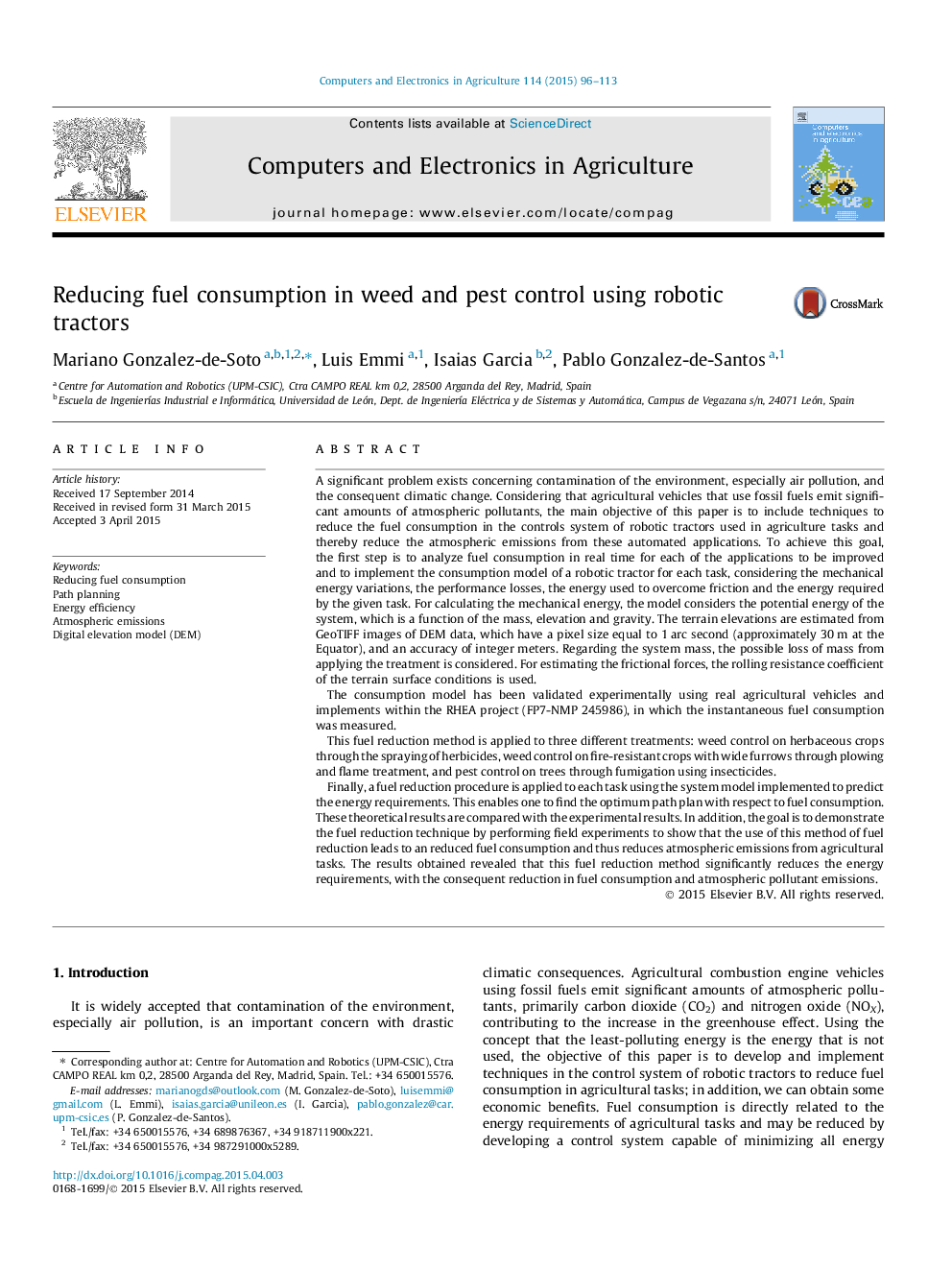| Article ID | Journal | Published Year | Pages | File Type |
|---|---|---|---|---|
| 6540698 | Computers and Electronics in Agriculture | 2015 | 18 Pages |
Abstract
Finally, a fuel reduction procedure is applied to each task using the system model implemented to predict the energy requirements. This enables one to find the optimum path plan with respect to fuel consumption. These theoretical results are compared with the experimental results. In addition, the goal is to demonstrate the fuel reduction technique by performing field experiments to show that the use of this method of fuel reduction leads to an reduced fuel consumption and thus reduces atmospheric emissions from agricultural tasks. The results obtained revealed that this fuel reduction method significantly reduces the energy requirements, with the consequent reduction in fuel consumption and atmospheric pollutant emissions.
Related Topics
Physical Sciences and Engineering
Computer Science
Computer Science Applications
Authors
Mariano Gonzalez-de-Soto, Luis Emmi, Isaias Garcia, Pablo Gonzalez-de-Santos,
